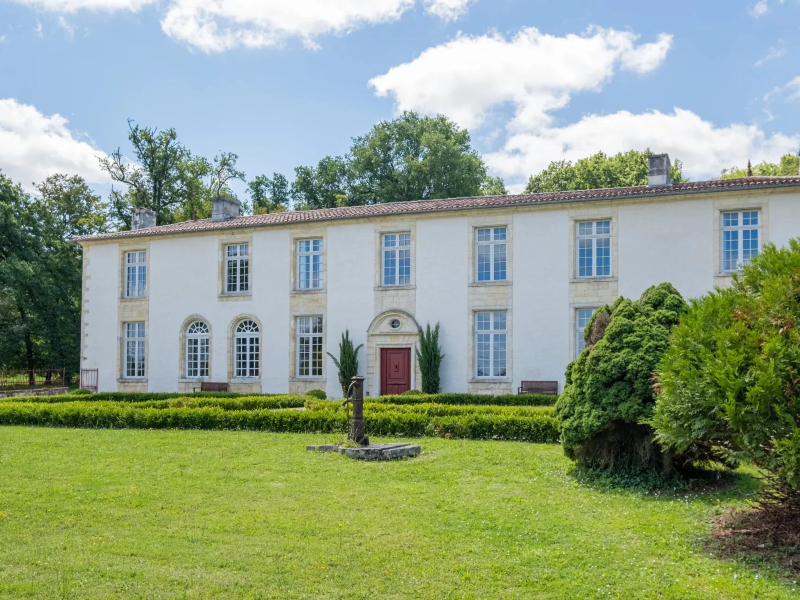The architecture of the Gironde

With nearly 10’000 square kilometres, the rivers Garonne and Dordogne meandering through to the estuary, and a rich history, Gironde is France’s largest department. Stretching from the Atlantic coast and Bordeaux in the West to the bastide town of Sainte Foy La Grande in the East, the department offers a wide variety of architecture, from Arcachonnaise houses to Bordeaux échoppes, and from stone farmhouses surrounded by vineyards and forests, to the majestic manoirs and stunning and chateaux of the famous wine regions. There really is an architectural style for everyone on the Gironde!
Historical townhouses
Bordeaux échoppes are the former craftsmen and shop-keeper houses that have become popular as charming city pied-à-terres. Dating back to the 15th century, these single storey, and often terraced houses, were some of the earliest live/workspaces that were gradually transformed, into small town houses during the 18th century. The solid and elegant facades from cut and dressed stone, give way to surprisingly deep accommodation with wooden floors and high ceilings.
Historical townhouses, often dating back to medieval times, can be found around the wealthier bastide towns such as Libourne, Monségur and Sainte Foy La Grande. Several Gironde bastide towns date back to the 13th century and were mainly founded by the British, making the architecture familiar for our British buyers. Towns began to develop along the rivers where deep water allowed for ports and shallow areas for crossing points. The rivers provided key transport links for vine and wine merchants and the towns became wealthier, with larger, more elegant townhouses appearing, especially in Napoleonic times.
Arcachonnaise houses originated in the coastal spa town of Arcachon, not far from the famous dune de Pilat. These tall, asymmetrical properties are typical of the Ville d’Hiver in Arcachon, but examples can be found all over the Gironde region. The houses were designed as holiday homes for those taking a break from Tuberculosis-ridden cities around the end of the 19th century. They have high ceilings and large windows that can be opened to provide air circulation. Balconies can be found on each floor as fresh air was regarded as excellent for the lungs. The houses often have ornate flashing along the edge of their roofs and red brick patterns at each corner.
Countryside farmhouses and Girondines
The fertile soils around the rivers Dordogne and Garrone, and the mild climate have made the Gironde a perfect farming environment and there are many beautiful stone farmhouses dotted around the countryside. Some even have river frontage, allowing the owners to use a boat to access local market towns.
Girondines are the famous country houses of the area with light, creamy coloured dressed limestone, symmetrical facades and terracotta tiled roofs. They are the epitome of timeless elegance with large windows and wooden shutters and a harmony of proportions. More rustic stone farmhouses with original tomette (terracotta tiles) floors and several outbuildings remain popular as permanent and second homes with potential for income with additional accommodation. We are seeing beautiful renovations of these countryside properties with travertine floors and stunning kitchens.
Tobacco growing formed a significant part of the agricultural landscape of the southern Gironde up until the 1980s and we now find tobacco séchoirs (tall, wooden barns) are being converted into modern open-plan homes with large volumes and vertical windows.
Wine country
With some of the world’s most famous wine regions including Médoc, Margaux and Pomerol, Gironde is a source of inspiration for the most passionate oenophiles. The fortified, medieval village of St-Emilion, a UNESCO world heritage site, is perched on a rocky promontory, surrounded by the vineyards of chateaux such as Ausone, Cheval Blanc, Angelus and Pavie. While these vineyards and their stunning chateaux do come up for sale from time-to-time, there are plenty of villages nearby with gorgeous manor houses and chateaux at more reasonable prices. The creamy limestone and often neo-classical facades are complemented by slate or terracotta tiled rooves and the proportions of the rooms are generous. Some come with vineyards and some just with parkland and woods.
The Gironde has a rich and diverse architecture with no shortage of history. Properties with easy access to Bordeaux, Paris (by 2h30 by train) and the coast still represent great value for money with some bargains still to be found.
Browse the latest properties for sale in the Gironde here.





